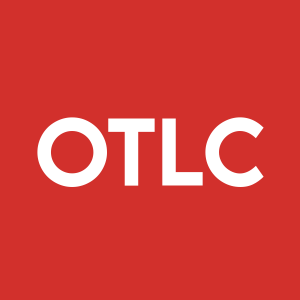Linkage of Cancer and Lupus in Gliomas Patients
AGOURA HILLS, Calif., March 25, 2024 (GLOBE NEWSWIRE) -- Oncotelic Therapeutics, Inc (OTCQB:OTLC) announced today the peer reviewed publication of Transforming Growth Factor Beta 2 (TGFB2) mRNA Levels, in Conjunction with Interferon-Gamma Receptor Activation of Interferon Regulatory Factor 5 (IRF5) and Expression of CD276/B7-H3, Are Therapeutically Targetable Negative Prognostic Markers in Low-Grade Gliomas: Past, Present, and Future Strategies in the Treatment and Management of Gliomas.
Dr. Vuong Trieu, CEO and Chairman of Oncotelic, stated, ”Our R&D team has discovered crosstalk between the TGF-β and IFN signaling pathways, linking gliomas and Systemic Lupus Erythematosus (SLE). This publication has identified IRF5 as a common target for both diseases, opening up a new avenue for combating cancer,”
Our findings place IRF5 at the intersection of inflammation and cancer. Understanding the role of IRF5 in both SLE and cancer opens an avenue for targeting IRF5 or its downstream pathways. This could offer new strategies for treating SLE and various cancers by modulating the immune response.
The article can be accessed for free online: https://www.mdpi.com/2072-6694/16/6/1202
Abstract:
Gliomas develop in the central nervous system from the glial cells that support it. Low-grade gliomas (LGGs) are characterized by a reduced number of immune cells infiltrating the tumor, requiring immune-boosting therapies to release the immunosuppressive environment of the tumor. We conducted a bioinformatics-led study to evaluate the prognostic impact of cell surface receptor markers for tumor-associated macrophages (TAMs) that produce transforming growth factor beta (TGFB) ligands and interferon-gamma receptor activation to maintain the tumor microenvironment in an immunosuppressed state. Detailed investigation of messenger RNA levels and their impact on OS in LGG patients demonstrated that low mRNA levels of a specific TGFB ligand, TGFB2, and the receptor along with the signaling molecules from interferon-gamma receptor activation (IFNGR2, IRF1, IRF5, and STAT1) result in improved survival of LGG patients. LGG patients expressing high levels of TGFB2 and IFNGR2 are over-represented in IDH wild-type tumor samples, suggesting that TGFB2 and IFNGR2 mRNA can be therapeutically targeted in these high-risk patients. Furthermore, demethylation of TFGB2, IFNGR2, IRF1, IRF5, STAT1, and CD276 genes also results in worse survival outcomes, pointing to a molecular mechanism that increases the negative prognostic effects of increased mRNA levels of these target genes. We observed that significant upregulation of mRNA expression levels for three TAM markers, MSR1/CD204, CD86, and CD68, suggested that TGFB2 is pivotal in establishing a pro-tumorigenic TME in gliomas mediated through TAMs. Interestingly, a tumor-associated antigen CD276/B7-H3 mRNA expression increased in tumor tissue, giving further insights into the roles of macrophages and tumor cells in the immunosuppressive TME. Therefore, to improve OS in LGG patients, combination therapies must target TGFB2 and IFN-γ activation (via IRF5 inhibition) or immune therapies targeted against CD276/B7-H3
About Oncotelic
Oncotelic (f/k/a Mateon Therapeutics, Inc.), was formed in the State of New York in 1988 as OXiGENE, Inc., was reincorporated in the State of Delaware in 1992, and changed its name to Mateon Therapeutics, Inc. in 2016, and Oncotelic Therapeutics, Inc. in November 2020. Oncotelic is seeking to leverage its deep expertise in oncology drug development to improve treatment outcomes and survival of cancer patients with a special emphasis on rare pediatric cancers. Oncotelic has rare pediatric designation for Diffuse Intrinsic Pontine Glioma (“DIPG” through OT-101) through its
Oncotelic's Cautionary Note on Forward-Looking Statements
This press release contains forward-looking statements within the meaning of the Private Securities Litigation Reform Act of 1995. All statements, other than statements of historical facts, included in this communication regarding strategy, future operations, future financial position, prospects, plans and objectives of management are forward-looking statements. Words such as "may", "expect", "anticipate" "hope", "vision", "optimism", "design", "exciting", "promising", "will", "conviction", "estimate," "intend," "believe", "quest for a cure of cancer", "innovation-driven", "paradigm-shift", "high scientific merit", "impact potential" and similar expressions are intended to identify forward-looking statements. Forward looking statements contained in this press release include, but are not limited to, statements about future plans related to the operations of the JV, taking the JV into an initial public offering or the success thereof, the progress, timing of clinical development, scope and success of future clinical trials, the reporting of clinical data for the Company’s product candidates and the potential use of the Company's product candidates to treat various cancer indications as well as obtaining required regulatory approval to conduct clinical trials and upon granting of approval by the regulatory agencies, the successful marketing of the products; building and the success of our nanoparticle platform and the related success of launching the platform, the development of the Company’s AI suite including but not limited to AI Chatbots, the public access to the Company’s AI suite, the success of the development of the AI suite or any other AI technologies and whether if any or portion thereof the Company’s AI suite or technologies will be commercialized and launched for sale. Each of these forward-looking statements involves risks and uncertainties, and actual results may differ materially from these forward-looking statements or may not occur at all. Many factors may cause differences between current expectations and actual results, including unexpected safety or efficacy data observed during preclinical or clinical studies, clinical trial site activation or enrollment rates that are lower than expected, changes in expected or existing competition, changes in the regulatory environment, failure of collaborators to support or advance collaborations or product candidates and unexpected litigation or other disputes, taking the Company or its affiliates through initial public offerings. These risks are not exhaustive, the company faces known and unknown risks, including the risk factors described in the Company's Annual Report on Form 10-K/A filed with the SEC on April 19, 2023 and in the company's other periodic filings. Forward-looking statements are based on expectations and assumptions as of the date of this press release. Except as required by law, the company does not assume any obligation to update forward-looking statements contained herein to reflect any change in expectations, whether because of new information, future events, or otherwise.
Contact Information:
For Oncotelic Therapeutics, Inc.:
Investor Relations
ir@oncotelic.com







